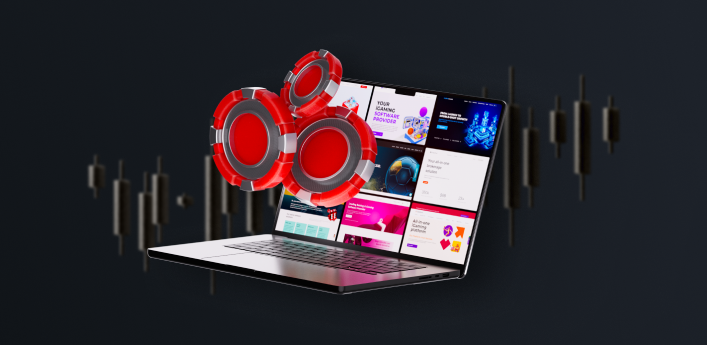
Что такое треугольный арбитраж: определение и пример
В статье
Треугольный арбитраж — это сложная финансовая стратегия, используемая для использования неэффективности валютных рынков, где расхождения в обменных курсах открывают возможности для получения прибыли. Этот метод предполагает проведение трёх последовательных обменов валют, начиная с одной валюты и заканчивая её обратной конвертацией, что потенциально может принести безрисковую прибыль. Понимание механизмов треугольного арбитража проливает свет на аспекты неэффективности рынка и иллюстрирует высокоскоростной характер современная торговля , который в значительной степени управляется автоматизированными системами.
Определение треугольного арбитража
Треугольный арбитраж — это финансовая стратегия, применяемая на валютном рынке, которая использует неэффективность обменных курсов трёх разных валют для получения прибыли. Суть этой стратегии заключается в последовательности сделок, образующих треугольный цикл, начинающийся и заканчивающийся одной и той же валютой. Цель состоит в том, чтобы использовать разницу в обменных курсах таким образом, чтобы трейдер завершал серию сделок с большей суммой валюты, чем в начале, получая прибыль без значительного риска.
Основная концепция
Треугольный арбитраж основан на концепции относительной стоимости валют, не совпадающих по курсу на рынке Форекс. Он включает три ключевых этапа, каждый из которых соответствует сделке между двумя валютами. Успех этой арбитражной стратегии зависит не от направления движения рынка, а от реализации этих несоответствий в ценах различных валютных пар в данный момент времени.
Временные расхождения в курсах валют могут создавать потенциал для треугольного арбитража. Эти расхождения могут возникать из-за ряда факторов, включая асинхронность обновления рыночных данных, различные уровни ликвидность В разных финансовых центрах или из-за задержек в распространении информации о валютном рынке. Такие условия создают ограниченные возможности для арбитража.
Теоретически треугольный арбитраж помогает поддерживать эффективность валютного рынка, корректируя эти нарушения. Трейдеры, занимающиеся этой практикой, используют свой капитал для корректировки спроса и предложения на рынках, тем самым способствуя приведению обменных курсов в соответствие с их истинными значениями, определяемыми фундаментальными факторами рынка.
Роль скорости и технологий
В треугольном арбитраже скорость и технологии играют решающую роль, поскольку рынок Форекс обладает быстрыми механизмами самокоррекции. Арбитражные возможности могут существовать всего несколько секунд, прежде чем обменные курсы корректируются, устраняя любые расхождения. Трейдеры используют передовые вычислительные технологии и сложные алгоритмы, чтобы извлечь выгоду из этих мимолетных возможностей.
- Передовые вычислительные технологии: Трейдеры используют системы, предназначенные для непрерывного сканирования рынка Форекс, мгновенно выявляя потенциальные возможности для арбитража. Эти технологии быстро выявляют возможности и оценивают прибыльность с учётом транзакционных издержек.
- Алгоритмическая торговляАлгоритмы играют ключевую роль в выполнении последовательности сделок на чрезвычайно высокой скорости. Они способны обрабатывать огромные объёмы данных, интерпретировать сложные рыночные условия и мгновенно принимать торговые решения без вмешательства человека. Скорость и точность этих алгоритмов критически важны, поскольку даже миллисекундная задержка может повлиять на прибыльность сделки.
- Интеграция с электронными торговыми площадкамиЭффективная реализация стратегий треугольного арбитража требует интеграции этих алгоритмов с электронными торговыми платформами, обеспечивающими прямой доступ к рыночным данным и исполнение сделок. Такая интеграция минимизирует задержку — время между обнаружением возможности и исполнением сделки.
Конкурентный характер рынка Форекс спровоцировал технологическую гонку вооружений между компаниями, стремящимися разрабатывать более быстрые и эффективные системы. Это включает в себя усовершенствование аппаратного обеспечения для ускорения обработки данных и усовершенствование программного обеспечения для улучшения алгоритмов принятия решений, поскольку успех часто зависит от способности быстро и точно совершать сделки на рынке, где миллисекунды могут означать разницу между прибылью и убытком.
Механика и исполнение
Механизм и реализация треугольного арбитража основаны на быстром выявлении и использовании неэффективности валютных курсов.
Выявление возможностей арбитража
Процесс начинается с выявления потенциальных возможностей арбитража в случаях, когда фактические кросс-курсы на рынке не совпадают с ожидаемыми кросс-курсами. Например, арбитражная возможность возникает, если произведение курсов обмена USD/EUR и EUR/GBP не равно прямому курсу обмена USD/GBP.
Исполнение сделок
- Первая сделка: Трейдер обменивает исходную валюту на вторую по текущему рыночному курсу. Этот шаг имеет решающее значение, поскольку он закладывает основу для арбитражного цикла.
- Вторая сделка: Затем вторая валюта обменивается на третью, снова по текущему обменному курсу. Этот шаг использует первое выявленное расхождение.
- Финальная сделка: Наконец, третья валюта обменивается обратно на исходную. Курс, по которому происходит этот обмен, имеет решающее значение, поскольку он определяет, принесёт ли транзакция прибыль.
Подробный пример треугольного арбитража
Рассмотрим следующий реальный сценарий, иллюстрирующий реализацию треугольного арбитража:
- Курсы обмена:
- Доллар США/евро = 0,85
- евро/фунт стерлингов = 0,70
- Фунт стерлингов/доллар США = 1,50.
- Расчет подразумеваемой ставки: Арбитражер рассчитывает предполагаемый курс USD/GBP, умножая курсы USD/EUR и EUR/GBP (0,85 * 0,70 = 0,595). Однако рыночный прямой обменный курс GBP/USD, который подразумевает курс USD/GBP 0,6667 (1/1,50), отличается от расчётного курса.
Этапы арбитражного исполнения
- Шаг 1: Арбитражер начинает со 100 000 долларов США и конвертирует их в евро по курсу USD/EUR 0,85, получая 85 000 евро.
- Шаг 2: Затем эти 85 000 евро конвертируются в британские фунты стерлингов по курсу EUR/GBP 0,70, что дает 59 500 фунтов стерлингов.
- Шаг 3: Наконец, 59 500 фунтов стерлингов конвертируются обратно в доллары США по курсу GBP/USD 1,50, в результате чего получается 119 000 долларов США.
Исход
Арбитражный цикл начинается со 100 000 долларов США и заканчивается 119 000 долларов США, что обеспечивает прибыль от арбитражных сделок в размере 19 000 долларов США. Этот пример демонстрирует потенциальную прибыль, которую можно получить, эффективно и быстро используя разницу между предполагаемым и фактическим обменными курсами.
Успешная реализация треугольных арбитражных стратегий требует понимания динамики валютного рынка и в значительной степени зависит от способности быстро выполнять расчёты и заключать сделки. Продвинутые торговые платформы и алгоритмическая торговля стали важнейшими инструментами в этом процессе, позволяя трейдерам использовать арбитражные возможности, которые могут существовать всего несколько секунд, прежде чем рыночные силы устранят неэффективность.
Проблемы и соображения
Хотя треугольный арбитраж может принести значительную прибыль, эта стратегия имеет свои особенности и недостатки, которые могут повлиять на её жизнеспособность. Понимание этих факторов крайне важно для любого трейдера, эффективно использующего этот метод арбитража.
Мимолетные возможности и коррекция рынка
Одна из основных проблем треугольного арбитража — это кратковременность используемых им возможностей. Валютные рынки высокоэффективны, и любые расхождения в обменных курсах обычно корректируются в течение нескольких секунд. Такая быстрая корректировка означает, что окно для использования этих возможностей крайне ограничено. Трейдеры должны уметь выявлять эти возможности и действовать, прежде чем они быстро исчезнут. Эта потребность в скорости делает треугольный арбитраж выгодным преимущественно только для тех, кто имеет доступ к автоматизированным торговым технологиям, позволяющим совершать транзакции практически мгновенно.
Высокоскоростные автоматизированные торговые системы
Трейдерам необходимо использовать передовые автоматизированные торговые системы, чтобы извлечь выгоду из краткосрочных возможностей треугольного арбитража. Эти системы предназначены для одновременного мониторинга нескольких валютных пар, выявления потенциальных возможностей для арбитража, расчета их доходности и исполнения необходимых сделок за доли секунды. Эффективность этих систем критически важна, поскольку даже небольшая задержка в исполнении может сделать арбитражную сделку убыточной. Более того, затраты на поддержание столь сложной технологии могут быть значительными, что требует значительного объема сделок для оправдания инвестиций.
Влияние транзакционных издержек
Возможность треугольного арбитража во многом зависит от транзакционных издержек, которые включают спреды между ценой покупки и продажи, торговые комиссии и возможное проскальзывание. Чтобы арбитражная возможность была прибыльной, общая прибыль от сделок должна превышать эти издержки. Поскольку каждая арбитражная последовательность включает несколько сделок, совокупные издержки могут быстро снизить маржу прибыли. Трейдерам необходимы точные механизмы для расчета этих издержек в режиме реального времени и определения чистой прибыльности потенциальных возможностей до совершения сделок.
Ликвидность и влияние на рынок
Другим фактором, который следует учитывать, является влияние сделок на рынок. Треугольный арбитраж часто подразумевает значительные суммы денег, и крупные сделки могут повлиять на рыночные цены участвующих валют. Это влияние на рынок может привести к проскальзыванию, когда фактическая цена исполнения сделки отличается от ожидаемой, что потенциально снижает прибыльность арбитража. Кроме того, более высокая ликвидность участвующих валютных пар, как правило, снижает это влияние на рынок, делая популярные валютные пары более подходящими для треугольного арбитража.
Нормативно-правовые факторы
Трейдерам также необходимо знать о нормативно-правовой базе, в которой они работают. В разных странах и регионах могут действовать особые правила, влияющие на возможность проведения быстрой и масштабной торговли. Соблюдение этих правил крайне важно для предотвращения правовых последствий и обеспечения бесперебойной торговой деятельности.
Заключение
Треугольный арбитраж – это сложный, но потенциально прибыльный метод. торговая стратегия Это играет важную роль в поддержании эффективности валютных рынков. Треугольный арбитраж требует доступа к быстрым автоматизированным торговым технологиям и чёткого понимания транзакционных издержек. Хотя он не лишён рисков, для тех, кто обладает необходимыми инструментами и опытом, он открывает привлекательные возможности для получения прибыли в динамичном мире валютной торговли.
Обновлено:
18 декабря 2024 г.



